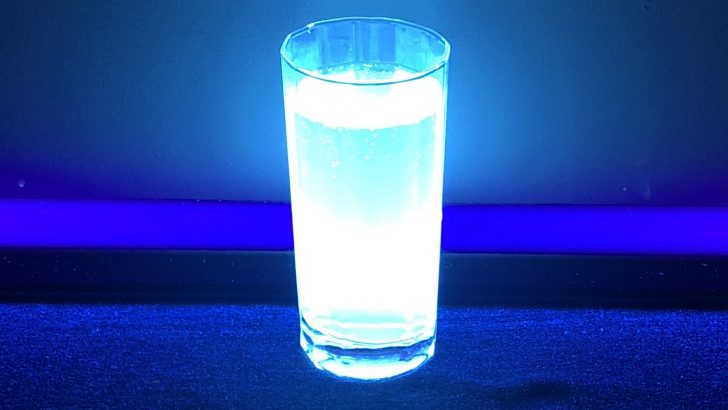Children’s Corner
Not many people have come across black lights, or even have them in their house although they are easy enough to come by particularly at a time when people are buying things online – something that has increased due to the pandemic.
Black lights allow materials and substances invisible to the human eye under normal lighting to be seen. What does it look like? How does it work? How can it be useful? These questions can be answered with a simple experiment.
Tonic water doesn’t look very strange under normal light but what happens when you look at it under a black light? Does the dye from a highlighter pen do the same thing? Find out what happens and why it happens with an easy experiment which can be done at home.
Apparatus:
A black light (which can be found in some large shops and online)
Tonic water or a highlighter pen.
A dark room to do the experiment.
Method:
If you are using a highlighter pen carefully break it open, remove the felt and soak it in a small amount of water for a few minutes.
Find a dark room.
Turn on the black light near your water, how does it look?
What’s happening?
The ultra violet (UV) light coming from your black light lamp excites things called phosphors. Tonic water and the dye from highlighter pens contain phosphors that turn UV light (light we can’t see) into visible light (light we can see). That’s why your water glows in the dark when you shine a black light on it.
Black lights are used in forensic science, artistic performances, photography, authentication of banknotes and antiques, and in many other areas. That’s the simple explanation!
More detail
If you really want to get into depth, you must know that black light (also known as UV or ultra violet light) is a part of the electromagnetic spectrum. The electromagnetic spectrum also includes infrared, X-rays, visible light (what the human eye can see) and other types of electromagnetic radiation.
A black light lamp such as the one used emits a UV light that can illuminate objects and materials that contain phosphors. Phosphors are special substances that emit light (luminescence) when excited by radiation. Your water glowed under the black light because it contained phosphors. If you used a highlighter pen then the UV light reacted with phosphors in the dye. If you used tonic water then the UV light reacted with phosphors in a chemical used in tonic water called quinine.


 Chai Brady
Chai Brady
